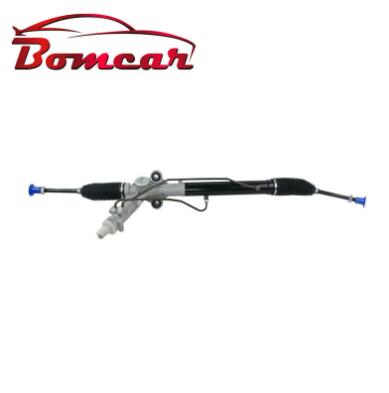Recognizing the Early Signs of Steering Rack and Pinion Wear
2024-08-20
The steering rack and pinion system is a critical component of your vehicle's steering mechanism. It translates the rotational motion of the steering wheel into the linear motion that turns your wheels. Over time, wear and tear can take a toll on this system, leading to various issues that can affect your driving experience and safety. In this blog, we'll explore the early signs of wear in the steering rack and pinion system and why it's essential to address them promptly.
1. Difficulty Steering
One of the most common signs of a worn steering rack and pinion is increased difficulty in steering, especially at low speeds. If you notice that turning the steering wheel feels heavier or requires more effort than usual, it could indicate that the steering rack is starting to wear out. This symptom is often more pronounced when making sharp turns or when the vehicle is at a standstill.
2. Steering Wheel Vibration
A vibrating steering wheel can be another early sign of a problem with the steering rack and pinion. If the steering wheel shakes or vibrates while driving, particularly during acceleration or when turning, it could be due to loose or worn components within the steering system. This vibration may also be accompanied by a knocking or clunking noise, which we'll discuss next.
3. Clunking or Knocking Noises
Unusual noises, such as clunking, knocking, or grinding sounds when turning the steering wheel, can indicate that the steering rack and pinion system is worn or damaged. These noises may result from loose or broken parts within the steering mechanism, and they often become more noticeable as the problem worsens. Ignoring these sounds could lead to more severe damage and potentially costly repairs.
4. Uneven Tire Wear
Uneven tire wear is another sign that your steering rack and pinion system may be malfunctioning. If the steering system is not functioning correctly, it can cause the wheels to be misaligned, leading to uneven wear on the tires. You may notice that one tire is more worn than the others or that the tread is wearing down more quickly on one side of the tire. Addressing the issue early can prevent further damage to both the steering system and your tires.
5. Steering Wheel Doesn't Return to Center
After making a turn, the steering wheel should naturally return to its centered position. If you notice that the steering wheel doesn't return to the center or does so slowly, it could be a sign of a problem with the steering rack and pinion system. This issue may result from internal wear or binding within the steering components, which can affect the vehicle's handling and stability.
Conclusion
Recognizing the early signs of wear in the steering rack and pinion system is crucial for maintaining your vehicle's safety and performance. Difficulty steering, steering wheel vibration, unusual noises, uneven tire wear, and a steering wheel that doesn't return to center are all symptoms that should be addressed promptly. If you experience any of these issues, it's important to have your vehicle inspected by a professional mechanic to prevent further damage and ensure your car remains safe to drive.



